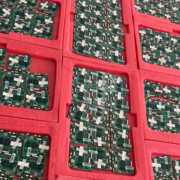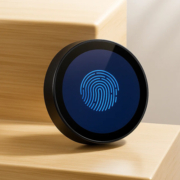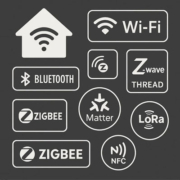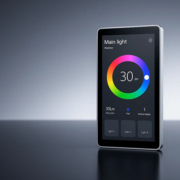Why Are Smart Home Device Protocols Not Standardized Across Brands?
Smart home technology has been advancing rapidly, with devices ranging from smart lights and thermostats to security cameras and intelligent control panels. While this expansion provides users with endless possibilities, one major challenge remains: lack of standardized protocols across brands. But why is this the case, and what does it mean for consumers and the industry?
1. Historical Development of Smart Home Technology
Smart home devices evolved from different origins and industries, leading to a fragmented landscape. For example:
- Lighting systems often started with Zigbee-based protocols.
- Security and surveillance devices may rely on Wi-Fi or proprietary communication.
- Industrial automation and HVAC systems might use KNX or Modbus protocols.
Since each sector developed its own standards before mass adoption, devices often remain tied to specific communication protocols.
2. Competition and Brand Differentiation
Brands aim to create unique ecosystems that lock customers into their products. By using proprietary protocols:
- Companies ensure compatibility only within their own brand, encouraging repeat purchases.
- Differentiation allows brands to highlight unique features or faster performance compared to competitors.
- It fosters an “ecosystem loyalty” where customers prefer sticking to devices from a single manufacturer.
This competitive strategy, while beneficial for the brand, reduces interoperability across devices from different brands.
3. Technical Challenges
Standardizing protocols across brands is technically complex due to:
- Different communication technologies: Wi-Fi, Zigbee, Z-Wave, BLE, Thread, and more. Each has unique advantages in range, power consumption, and data throughput.
- Security concerns: Ensuring end-to-end encryption across multiple brands is challenging.
- Firmware and hardware differences: Devices vary in processing power, memory, and sensor capabilities, making a one-size-fits-all protocol difficult to implement.
These technical barriers slow down efforts to unify communication standards across all smart home devices.
4. Market and Regional Variations
Protocols may also vary due to regulatory requirements or regional preferences:
- Some countries have strict wireless communication standards.
- Power consumption regulations may restrict certain protocols.
- Consumer expectations differ; for instance, some markets prioritize ultra-low latency, while others focus on energy efficiency.
This regional diversity further complicates standardization.
5. Emerging Solutions
Despite these challenges, the industry is moving toward better interoperability:
- Matter Protocol: Developed by the Connectivity Standards Alliance, Matter aims to unify smart home devices across brands using IP-based communication.
- Bridge Hubs and Controllers: Devices like smart home hubs or bridges translate between multiple protocols (e.g., Zigbee to Wi-Fi), enabling cross-brand communication.
- Open APIs: Many companies offer APIs for developers to integrate their devices into third-party platforms.
While full standardization is still a work in progress, these solutions help consumers enjoy more cohesive smart home experiences.
Smart home device protocols are not standardized across brands due to historical development, competition, technical challenges, and regional variations. However, initiatives like the Matter protocol, bridge hubs, and open APIs are helping to bridge the gap. As technology evolves, consumers can expect smarter and more interoperable devices, allowing them to mix and match products from different brands without losing functionality.










